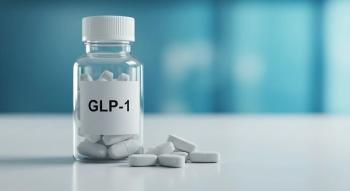
Addiction to the Internet May Be Associated With Less Sleep, Worse Quality of Life in Adolescents
Sleep duration is positively associated with quality of life in adolescents.
Internet addiction may worsen an adolescent’s perception of their quality of life (QOL), according to the authors of emerging research published in the Jornal de Pediatria from Brazil. Daytime sleepiness was a significant unhealthy behavior associated with this form of addiction.
“The higher the internet addiction, the higher the daytime sleepiness and the lower the QOL of adolescents,” wrote authors in the article.
Worldwide, there is a growing problem of excessive technology use, especially prior to sleep. The US National Sleep Foundations (USNSF) reports that adolescents with high exposure to technologies get fewer hours of sleep than the recommended 8 to 10 hours, according to the study authors.
However, these individuals are of an age where they will develop physical, cognitive, emotional, and social behaviors that carry into adulthood. Studies already show that excessive screen time can lead to too little sleep or daytime sleepiness (which in turn can reduce QOL), and these poor sleep behaviors may increase the risk of developing sleep-related problems in adulthood.
The current study evaluates the impact of internet addition on adolescent QOL and sleep problems. Authors hypothesized that internet addiction would lead to reduced sleep duration and reduced QOL, and among the 875 adolescents who participated in the cross-sectional study, internet addiction was associated with shorter sleep duration, daytime sleepiness, and reduced perception of QOL.
In fact, researchers observed a direct association between sleep duration and daytime sleepiness, but this could be explained physiologically. Children in this age group have different physiological processes than adults, and their melatonin release and absorption might look different. Moreso, the results of other studies which evaluate daytime sleepiness in adolescents show that this age group consistently perceives the need for more sleep.
Girls were also more likely to have perceived daytime sleepiness compared with adolescent boys. A previous study from Matos et al. may also support these findings, according to the authors. In the prior 2019 study, the authors found that the risk for low sleep quality and short sleep duration are worse for girls.
The authors noted there are some limitations to this study. First, the data cannot confirm a causal relationship between excessive use of technologies and reduced QOL. Further, the cohort was not randomized (only including students enrolled in school), and new studies would need to evaluate a randomized cohort.
This particular study also did not identify a significant link between internet addiction and sleep duration in adolescents, but more studies should evaluate the link between internet addiction and sleep duration, along with its link to physical/physiological factors.
It’s important to do research on this age group because these poor sleep behaviors can become behaviors in adulthood that pose health risks now and in the future, according to the authors.
Notably, the authors recommend in the article that “internet use in adolescents should be better supervised by parents, given the evidence of detrimental effects on quality of life and daytime sleepiness.”
Reference
Ferrari Junior GJ, da Silva AB, Meneghetti A, et al. Relationships between internet addiction, quality of life and sleep problems: a structural equation modeling analysis. Jornal de Pediatria. Jan 2, 2024; doi:10.1016/j.jped.2023.09.015.
Newsletter
Stay informed on drug updates, treatment guidelines, and pharmacy practice trends—subscribe to Pharmacy Times for weekly clinical insights.






































































































































































































